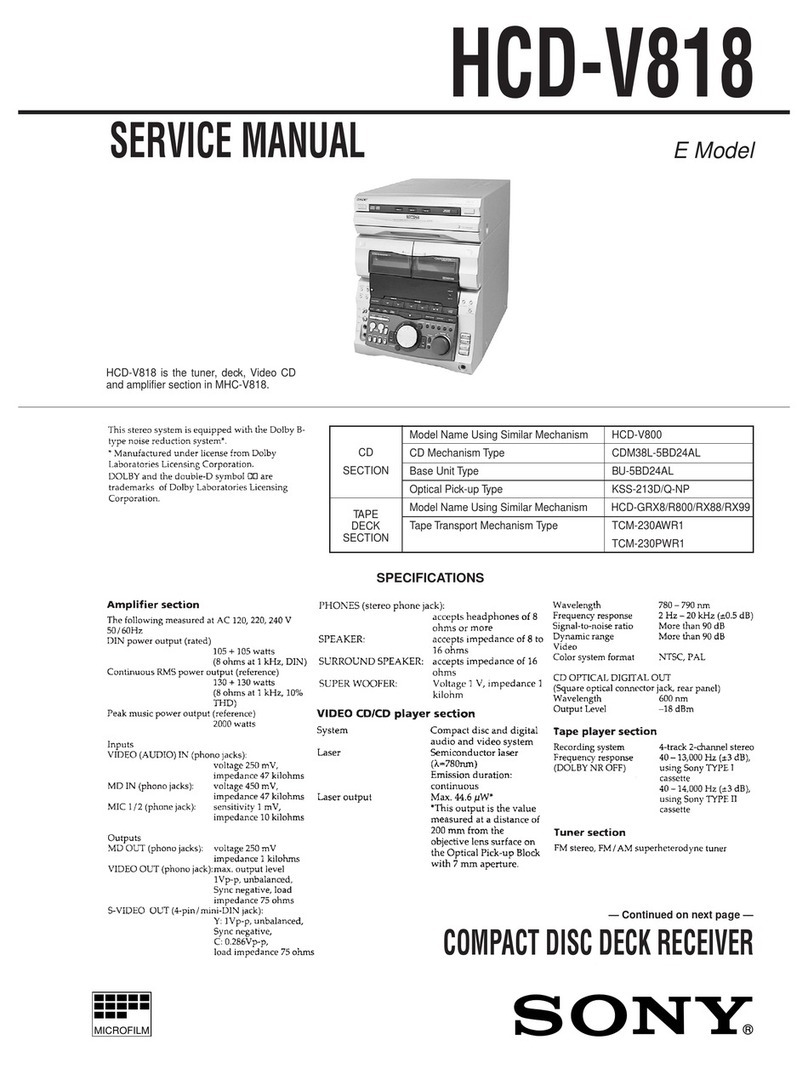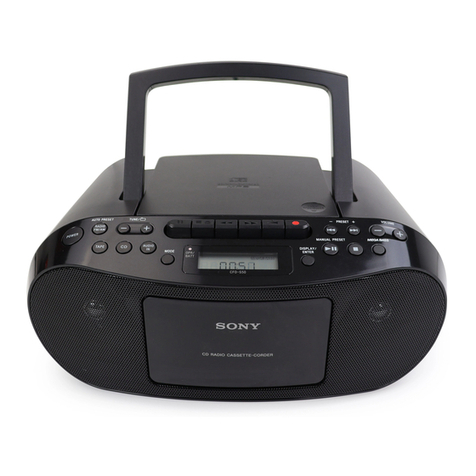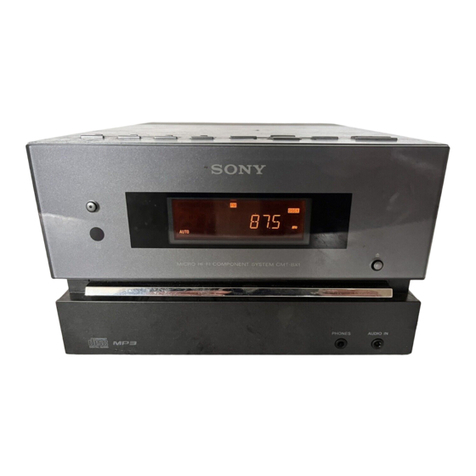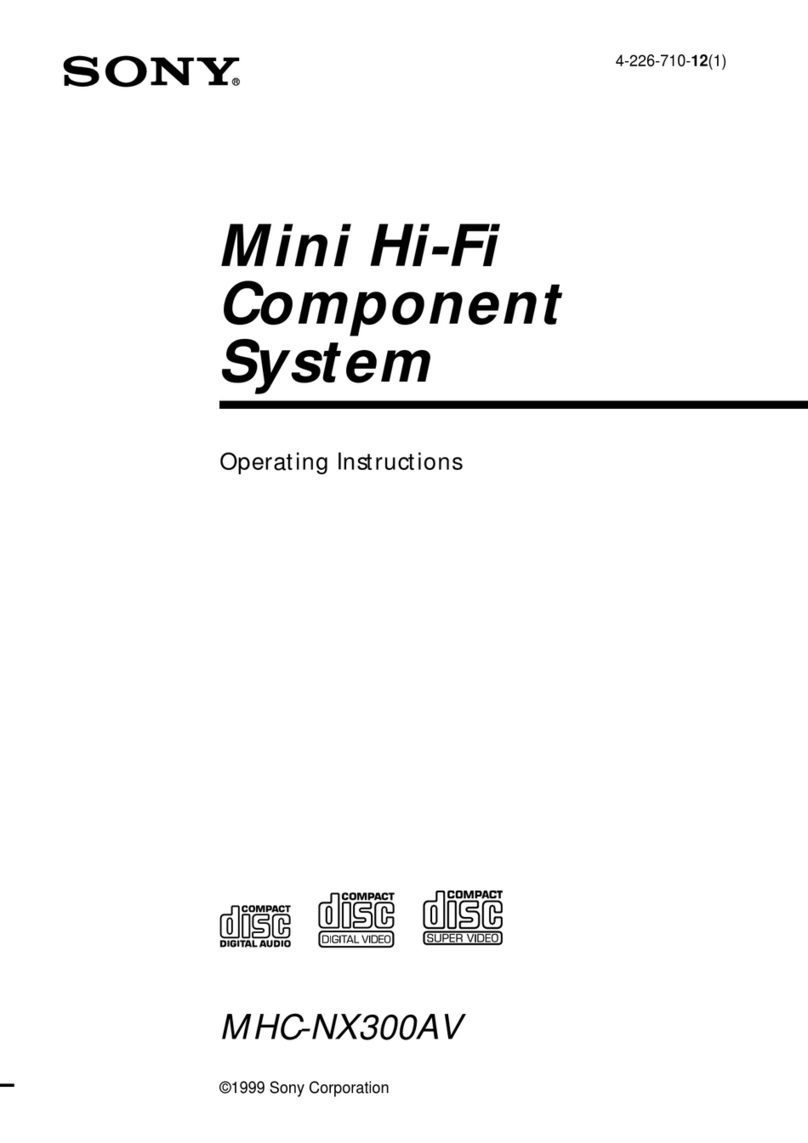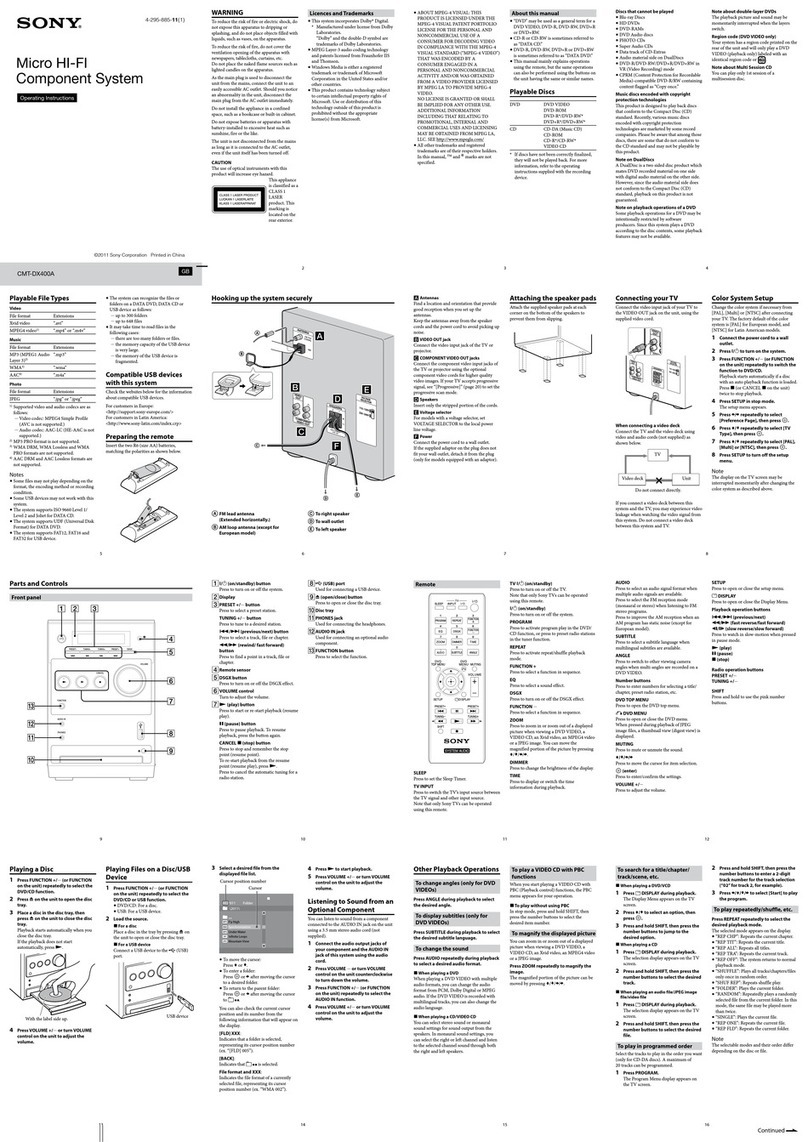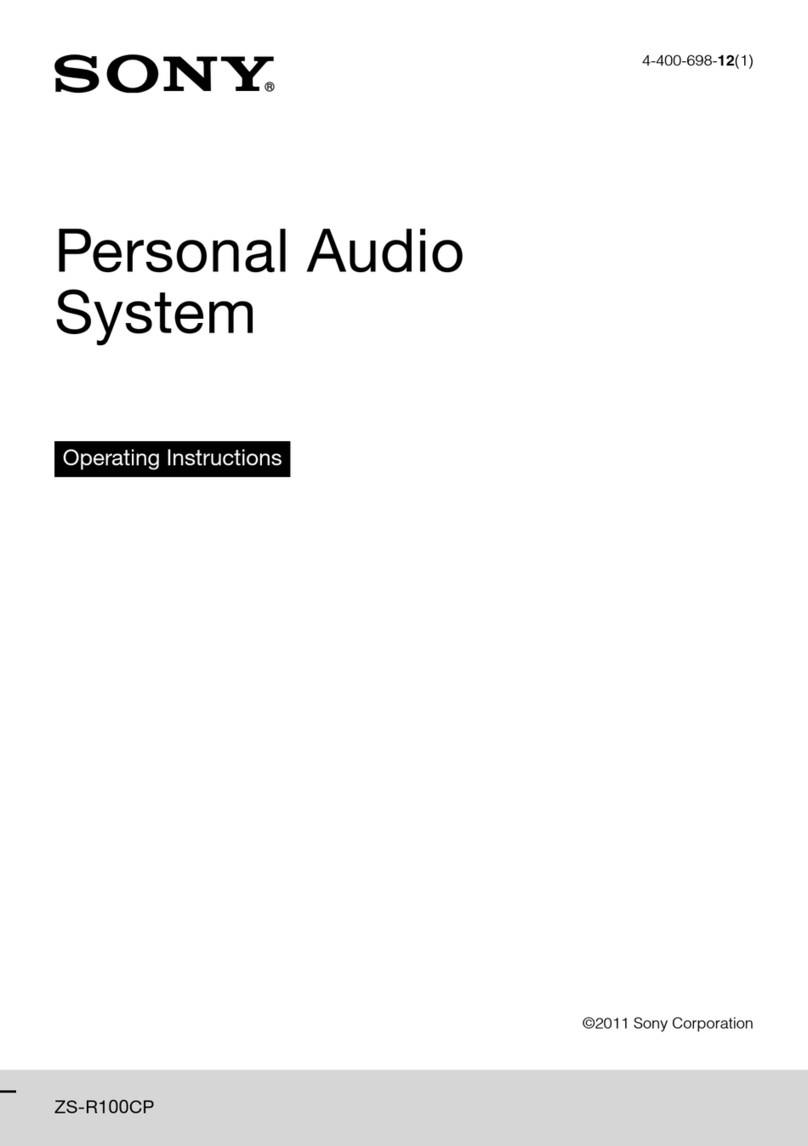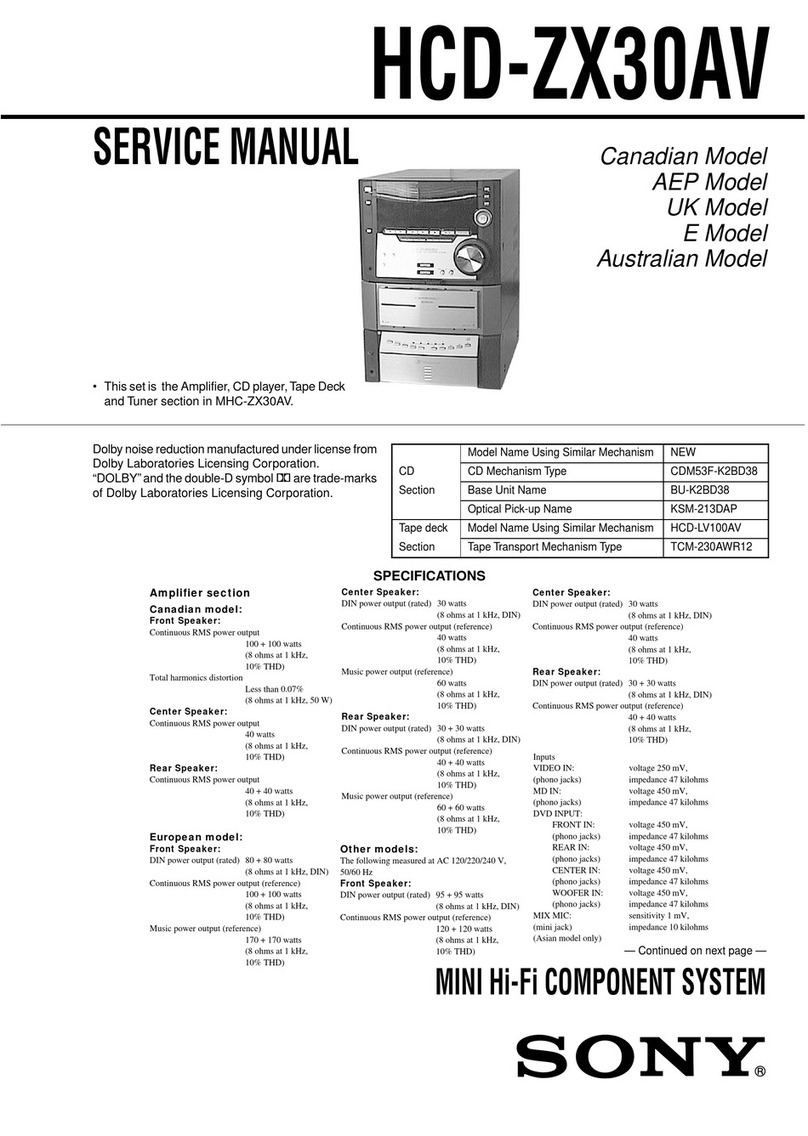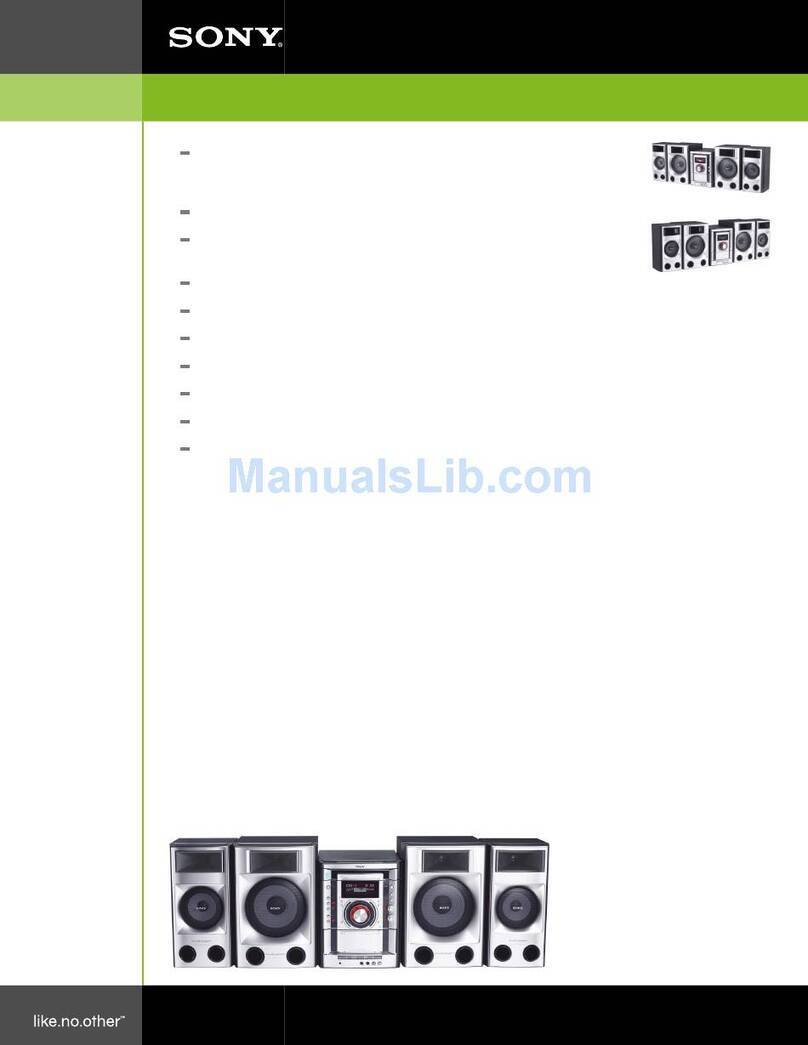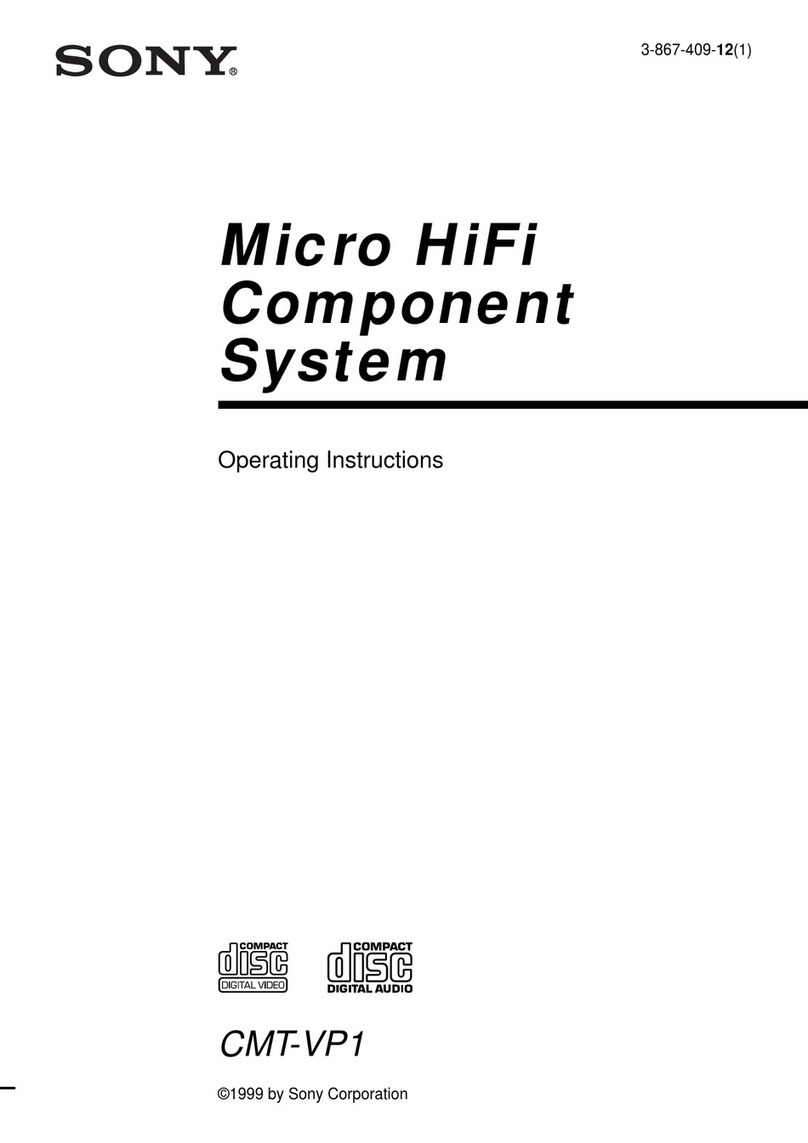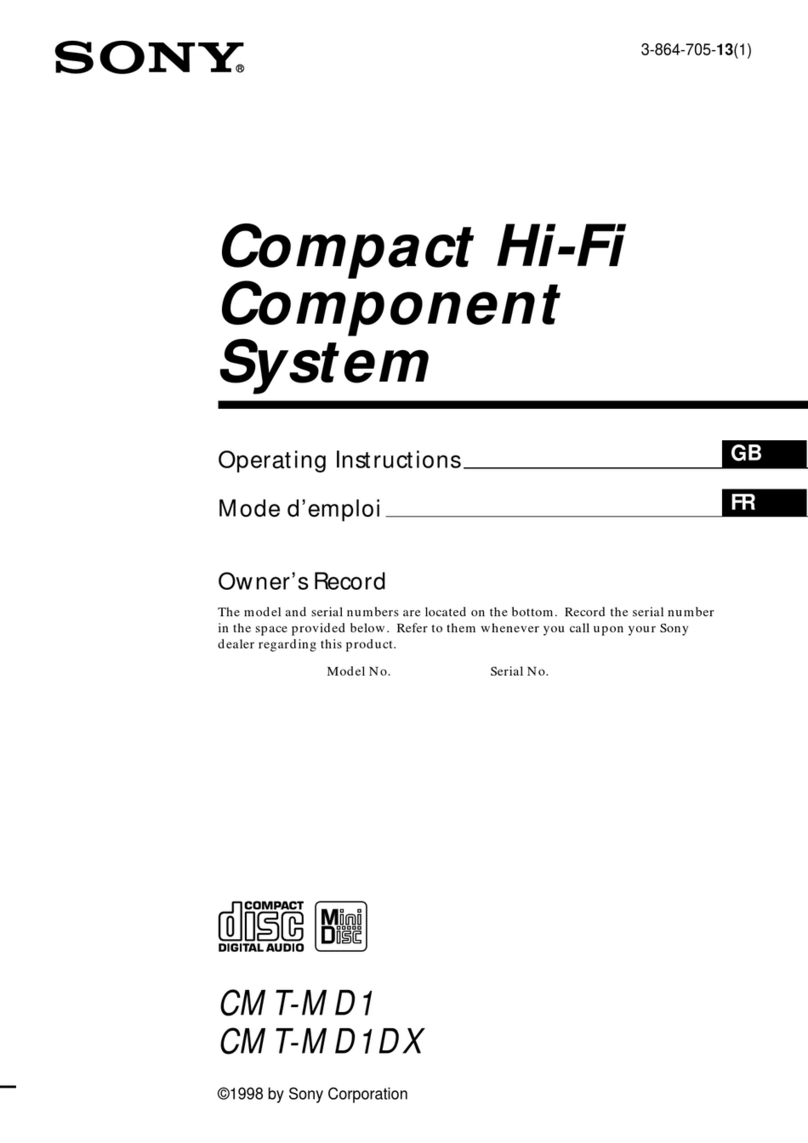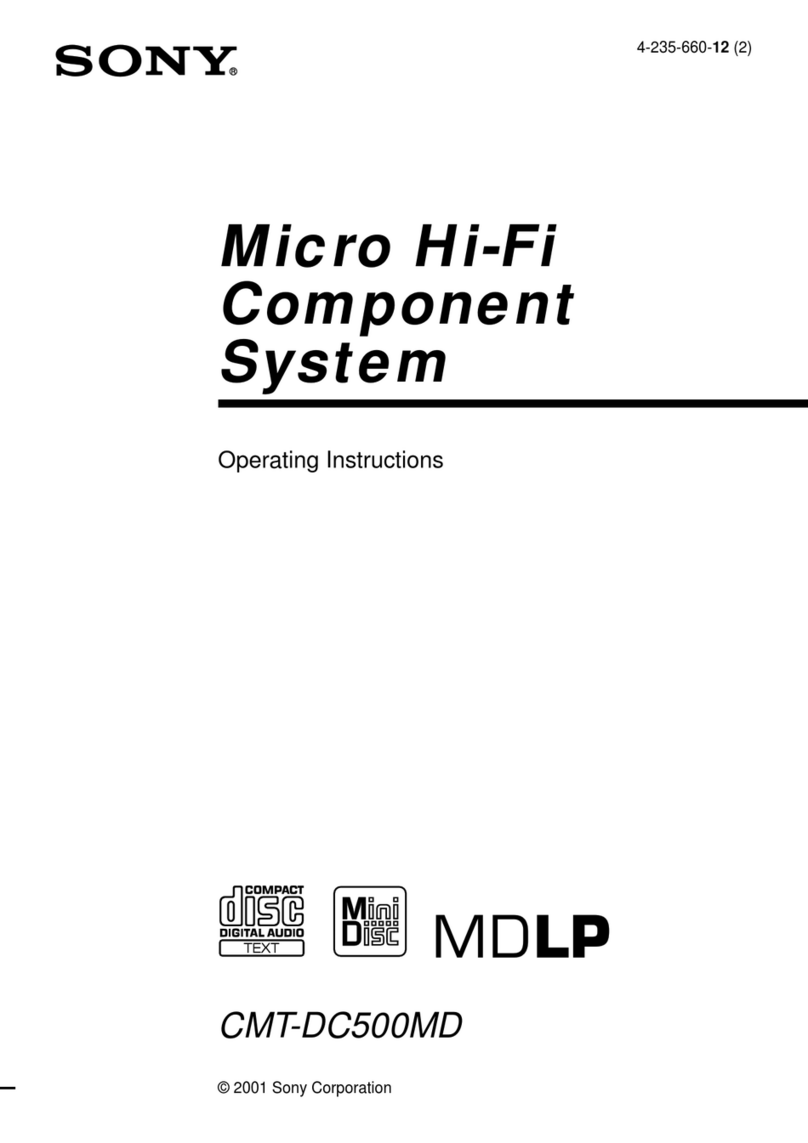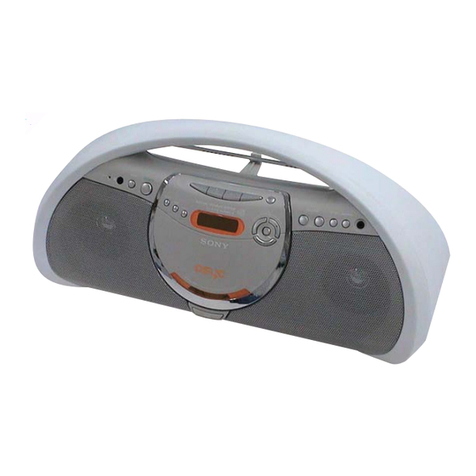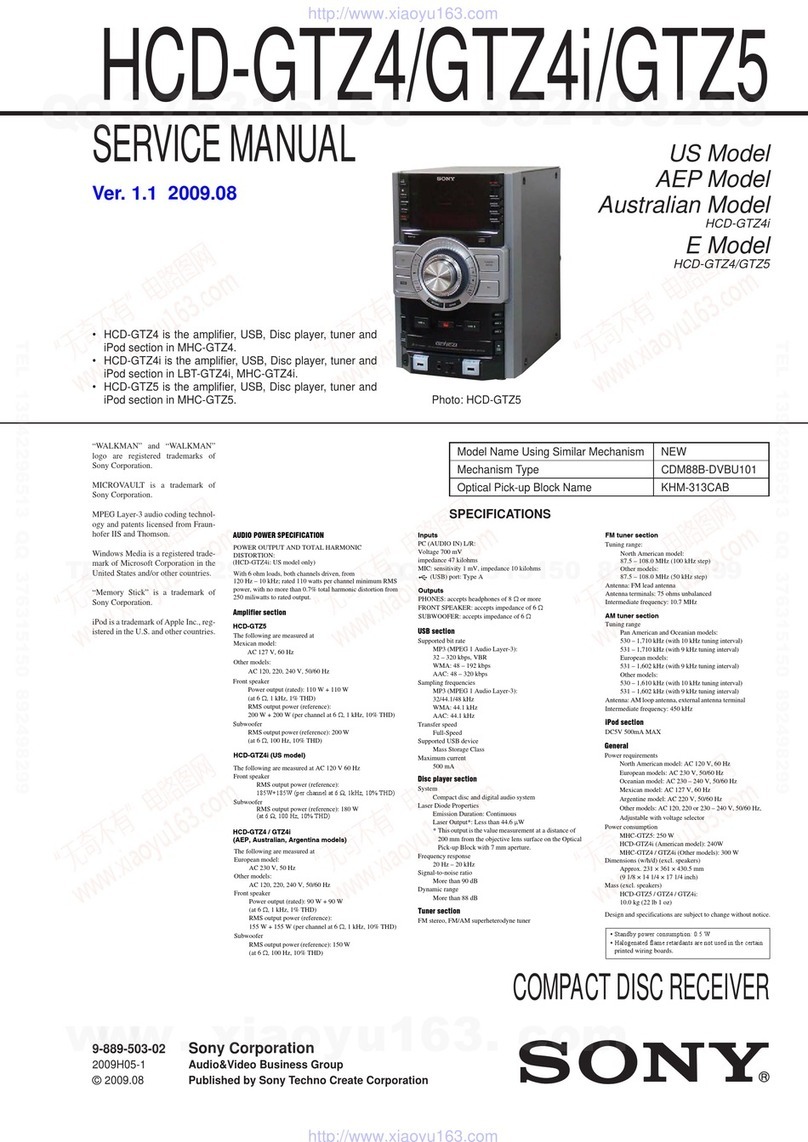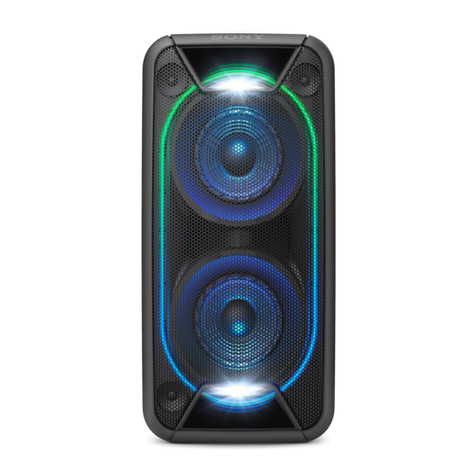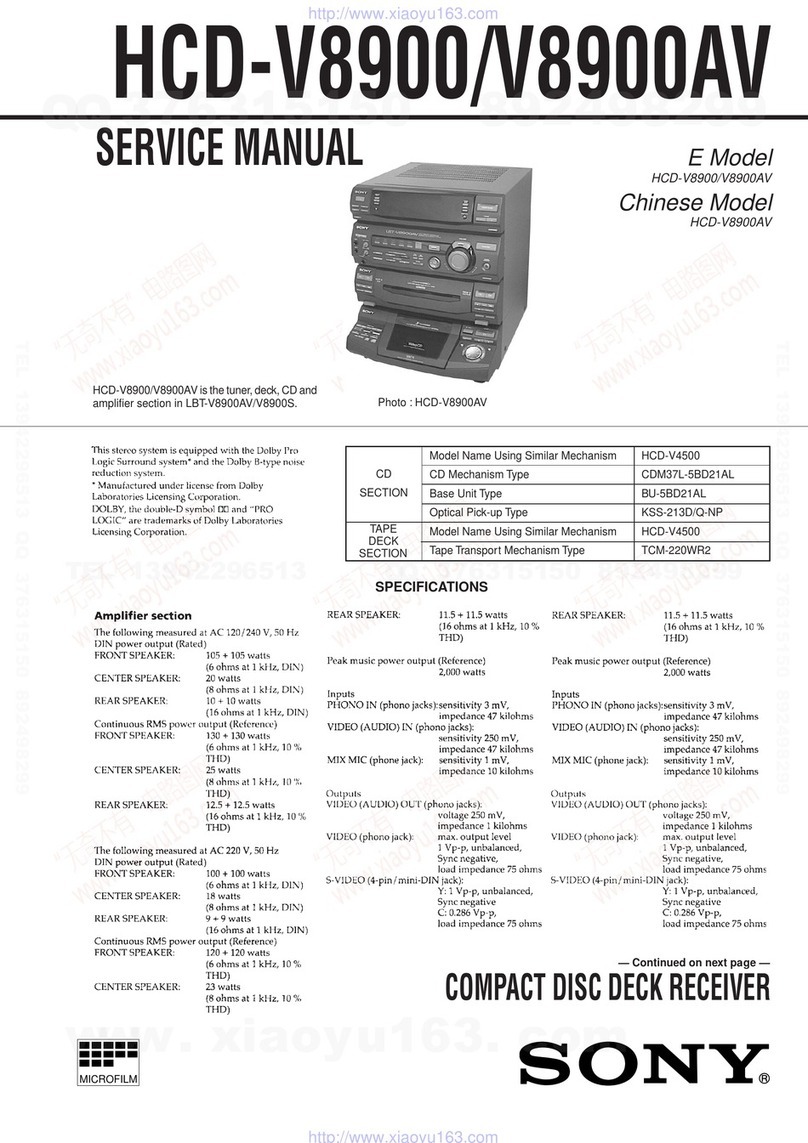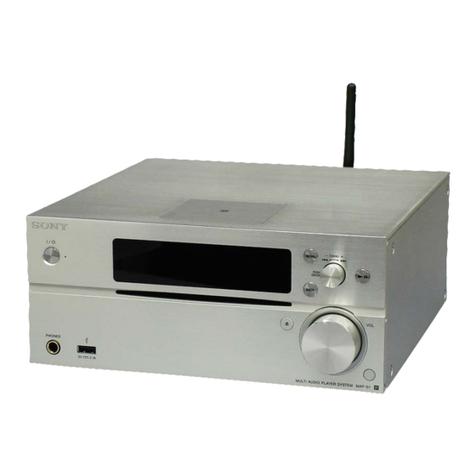
2
HCD-EP414
1. SERVICING NOTES ······················································· 3
2. GENERAL ·········································································· 5
3. DISASSEMBLY
3-1. Rear Cabinet ··································································· 8
3-2. CD Cabinet Section, Front Panel Section ······················· 8
3-3. Base Unit (BU-K7BD44B) ············································· 9
3-4. CONTROL Board, BACK LIGHT Board ······················ 9
3-5. Tape Mechanism Deck (CMAL1Z240A) ····················· 10
3-6. Cassette Door Assy ······················································· 10
3-7. POWER Board, MAIN Board ······································ 11
4. MECHANICAL ADJUSTMENTS ····························· 12
5. ELECTRICAL ADJUSTMENTS ······························· 13
6. DIAGRAMS ······································································ 15
6-1. Block Diagrams – CD Section – ·································· 17
6-2. Block Diagrams – Main Section – ······························· 18
6-3. Printed Wiring Boards – CD Section – ························ 19
6-4. Schematic Diagrams – CD Section – ··························· 20
6-5. Printed Wiring Borads – Main Section – ····················· 21
6-6. Schematic Diagrams – Main Section – ························ 22
6-7. Printed Wiring Boards – Control Section – ················· 23
6-8. Schematic Diagrams – Control Section – ···················· 24
6-9. Printed Wiring Boards – Power Section – ··················· 25
6-10. Schematic Diagrams – Power Section – ···················· 25
6-11. IC Pin Function Description ······································· 28
7. EXPLODED VIEWS
7-1. Cabinet Section ····························································· 30
7-2. Front Panel Section ······················································· 31
7-3. CD Cabinet Section ······················································ 32
7-4. Base Unit Section (BU-K7BD44B) ······························ 33
8. ELECTRICAL PARTS LIST ······································· 34
TABLE OF CONTENTS
General
Power requirements
European model: 230 V AC, 50/60 Hz
Australian model:
Mexican model:
230 - 240V AC, 50/60Hz
120 V AC, 60Hz
110 - 120V or 220 - 240V AC, 50/60HzOther models:
Power consumption
European model: 50 watts
0.3 watts (in the standby
mode)
Other models: 50 watts
Dimensions (w/h/d) Approx. 163 × 233 × 237
mm
Mass Approx. 3.6 kg
Design and specifications are subject to change
without notice.




